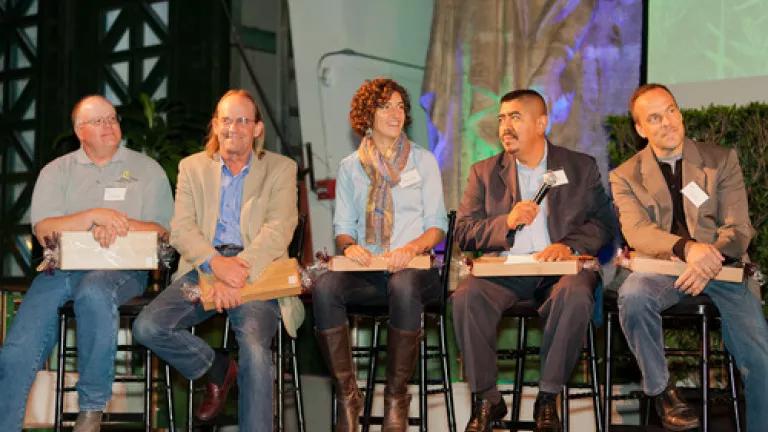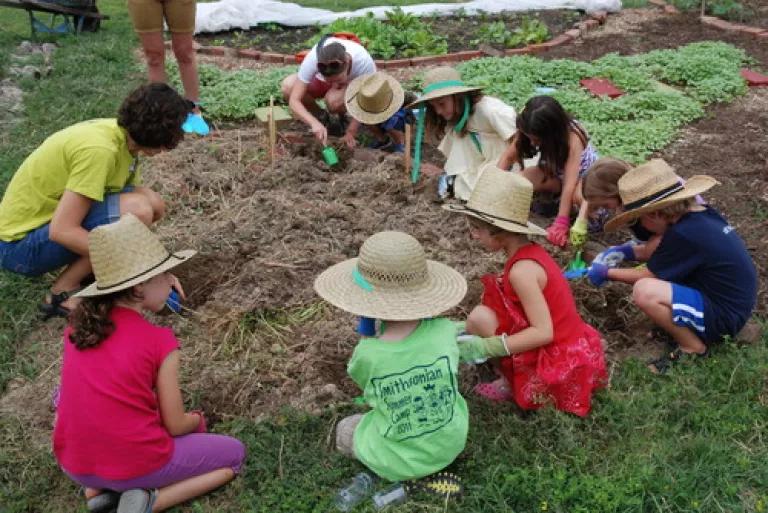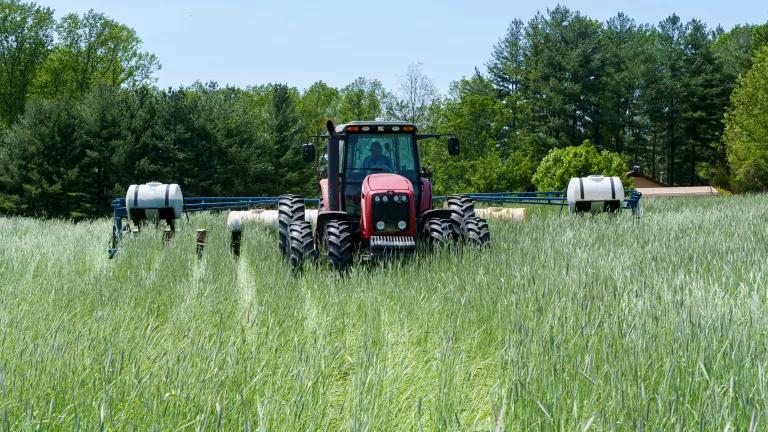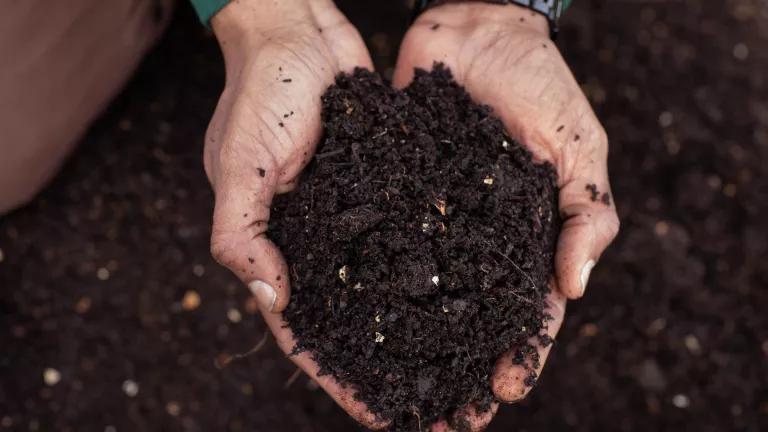
The holiday season is upon us and if you're anything like me, you start planning your New Years resolutions early. As someone who spends a lot of time thinking about food—what we eat, where it comes from, how it was produced, and what each of us can do to make our food system more sustainable from farm to fork—I humbly submit three food resolutions for 2013, inspired by NRDC’s Growing Green Award alums. My hope is that one or more resonates with you and helps make your New Year a little bit tastier—and greener.
And as we here at NRDC seek our next “crop” of sustainable food heroes for the 2013 awards, I also hope you’ll nominate yourself or your favorite food leader this week. Final call for nominations ends Friday, December 7th!
1) Give thanks to the hands that feed us. Injustices faced by food system workers are severe and systemic. Legal loopholes deprive the 1.2-1.8 million farmworkers in the U.S. of many federal workplace protections. Agriculture is the nation’s most hazardous occupation, with an estimated 28.6 deaths per 100,000 adult workers each year[1], nearly 8 times the rate for other industries[2]. Average wages throughout the food supply chain and frequent wage theft keep many workers below the poverty line.
We can’t talk about a sustainable food system without talking about justice for the workers who grow, pick, process, transport, prepare, sell, and serve our food. At NRDC, we are honoring outstanding leadership in addressing issues facing food workers with our Growing Green Award (GGA) in the category of Food Justice Leader. Last year’s winners, Lucas Benitez and Greg Asbed of the Coalition of Immokalee Workers, revolutionized Florida's $600 million fresh tomato industry with their Fair Food Program, creating today's blueprint for farmworker justice. But you don’t have to be a full-time labor advocate to do your part. For information on what each of us can do to help, check out The Hands That Feed Us, a report released this year by the Food Chain Workers Alliance.
2) Vote with your wallet. And then vote with your vote. Farmers, food companies and advocates all over the country are living proof that we can grow and eat food that is both good for us and respects workers, animals, and our planet—and invest in health and wellness for the next generation
Gabe Brown, 2012 GGA winner in the Food Producer category, has transformed his North Dakota cattle ranch into a model of ecologically integrated agriculture, growing a highly diverse mix of crops and using innovative grazing practices that build up healthy and resilient soils. George Siemon, CEO of Organic Valley and 2012 GGA winner in the Business Leader category, has spent decades demonstrating the viability of scalable organic food and farming and the cooperative production model. Andrea Northup, winner in the Young Food Leader category, blazed a trail to connect schools with local farms through the DC Farm to School Network. Before the age of 25, Andrea was the principal architect of landmark legislation, which makes our nation’s capital one of the few and first U.S. jurisdictions to provide financial incentives to schools that serve fresh, locally grown products, and requires schools to educate students about the importance of the origins of their food.
But leaders like Gabe, George, Andrea, Lucas and Greg can’t do it alone. We need more “eye contact”, literal and figurative, between consumers and the farmers that produce our food. We also need more eyes on our lawmakers.
When consumers pay attention to what we’re eating, where it’s coming from and how it was produced, our power is real—just look at pink slime. So flex your consumer muscle and vote with your food dollars, buying products like meat raised without antibiotics whenever possible. Tell your grocery store manager that they have a role to play in getting safer, more sustainably produced foods into their aisles and that you expect them to play it. Flex your citizen muscle too by using the new Food Policy Action scorecard to hold your representatives accountable for the votes they take on everything from hunger to food safety to local farming systems to school food programs.

3) Embrace your inner frugality. Eating on a budget doesn’t have to mean eating fast or processed food. For the last year, I’ve had the pleasure of participating in an ongoing demonstration that buying low-impact, fresh and seasonal ingredients and cooking them at home can be simple, affordable, and enjoyable—monthly dinners we call “Frugal Feasts” that are healthy, sustainably-sourced, and cost no more than $5 person. The concept works for two main reasons: First, when you don’t put meat at the center of your plate, you free up your grocery budget to buy higher quality ingredients across the board, including much of your produce organically grown. Second, when you make eating a community affair, “economies of scale” kick in and make meals entirely affordable. But don’t take my word for it; host a Frugal Feast in the New Year and see for yourself!
And don’t forget to give back to the leading food producers, businesspeople, food justice advocates, and young food heroes who are getting their hands dirty transforming the future of food. Who inspires you? Which good food heroes are making strides in your community? Nominate them or yourself for a Growing Green Award by this Friday, December 7th. Eat well and here’s to a good food future!
Sasha Lyutse is a food and agriculture-focused policy advocate with the Natural Resources Defense Council (NRDC). She blogs regularly on food issues at NRDC’s Switchboard.
*A version of this post ran at Ecocentric Blog.
[1] National Safety Council. 2010. “Injury Facts.”
[2] National Center for Farmworker Health. “Occupational Health and Safety.”



